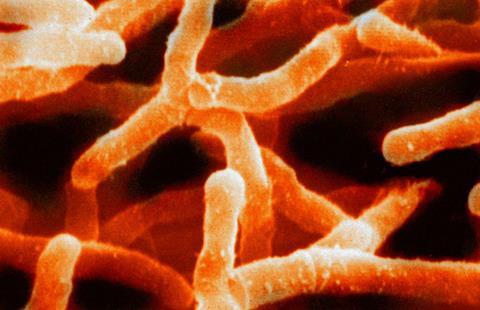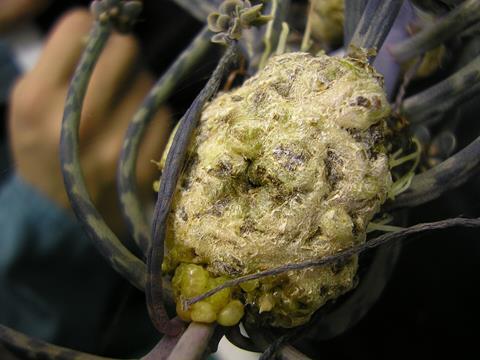The rhizosphere is a narrow region of soil that surrounds the roots of plants. It is a dynamic and complex environment where the roots, soil, and microorganisms interact. The term “rhizosphere” was first coined by plant physiologist Lorenz Hiltner and comes from the Greek words “rhiza,” meaning root, and “sphaira,” meaning sphere.
Roots act as a surface for nutrient exchange between the soil and plants. Anchored into the ground, plants lack the mobility to move to find nutrients and, therefore, rely on assistance from microorganisms to facilitate the uptake of nutritious compounds to benefit the plants. The rhizosphere can be divided into endorhizosphere, rhizoplane and ectorhizosphere. The rhizosphere is distinguished from bulk soil due to its concentrated zone of exudates and microbes and their enhanced activity.
Promoted: AMI has teamed up with QIAGEN to help you get the highest yields from your soil DNA Extractions. Get your free guide here.
The rhizosphere is the immediate area surrounding the root hairs – here, a trade-off occurs. Plants release exudates (secretions and diffusates), which are used as interkingdom signalling compounds between the host plant and microbes. Exudates can selectively influence the microorganisms within the rhizosphere to benefit plant health. The rhizosphere can, therefore, be described as a dynamic and versatile environment with ever-changing microbial diversity.
As a diverse environment, the microorganisms have equally diverse roles in the rhizosphere, which can include plant nutrition, promoting growth, and inducing and/or preventing disease.
Pathogen-suppressing soil bacteria
Actinomycetes are Gram-positive bacteria which have a beneficial relationship with plants due to their nitrogen-fixing abilities, thus promoting plant growth. They also have the ability to control particular plant pathogens, such as Colletotrichum higginsianum, to prevent disease. Interestingly, research has shown actinomycetes can degrade pesticides such as the chemical diuron.

Mycorrhizal fungi
Mycorrhizal fungi form a mutualistic relationship with plants. More than 80% of plants are colonised by arbuscular mycorrhizal fungi. By combining their mycelium with the extended roots of the plants, there is an increase in the surface area for water and mineral absorption between microorganisms and plants in exchange for carbohydrates for the fungi.
Plant growth-promoting rhizobacteria (PGPR)
These bacteria exist in a variety of locations on the plant, including the roots, within the plants and with the leaves. Endophytic bacteria found in the rhizosphere can penetrate plant cells and take part in nitrogen fixation and phosphorus solubilisation, increasing the availability of these molecules, which plants cannot supply for themselves. These bacteria can live in a symbiotic or non-symbiotic relationship with the plants, such as Rhizobium and Azotobacter, respectively. PGPR bacteria have a role in nutrient availability and are also useful as a biological control against plant pathogens.
Pathogenic microorganisms
Pathogenic fungi and bacteria are notorious for causing substantial crop loss. These organisms reside within the rhizosphere microbial community, competing for nutrients available. Bacteria such as Agrobacterium tumefaciens are problematic in causing infections by entering the roots via open wounds and stimulating tumour-like growths, causing swollen galls. In addition, fungal-like oomycetes infect roots with motile zoospores. Electrotaxis is a crucial signalling method used to initiate infection by oomycetes. It allows the pathogen to selectively choose live roots to maximise their survival and likelihood of establishing an infection in the plants.

The rhizosphere and food security
These microorganisms in the rhizosphere form a complex web of interactions with each other, plant roots, and soil, contributing to nutrient acquisition, disease suppression, and overall plant health. Understanding these interactions is crucial for sustainable agriculture and ecosystem management, as it can help optimise soil health and plant productivity.
Current research includes metagenomics and synthetic biology to delve deep into the function of the rhizosphere microbiome, utilising culture-independent methods of sequencing to reconstruct soil microbiome genomes, including unculturable organisms. This research allows for further investigations to explore metabolic pathways that may benefit plant health and promote their growth. Furthermore, combining this data with metatranscriptomics enables researchers to identify genes expressed at relevant points in time. The complexity and highly dynamic nature of the rhizosphere can make it difficult to fully understand the interconnectedness of particular organisms with the soil and plants; therefore, greater work should be done for in situ visualisation and temporal analyses using multi-omics methods to get a moving picture of the relationships within the rhizosphere. This, in conclusion, will improve general knowledge of plant growth and health to be applied to global food security and crop management in the future.








No comments yet